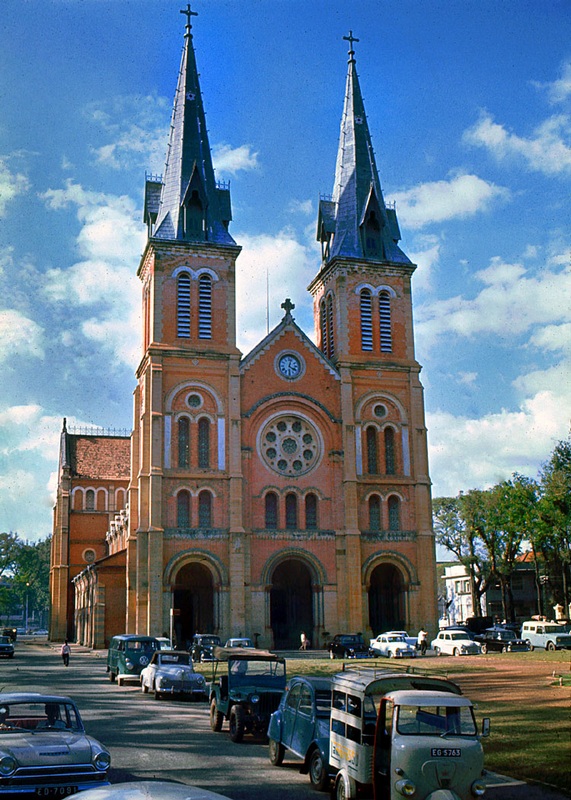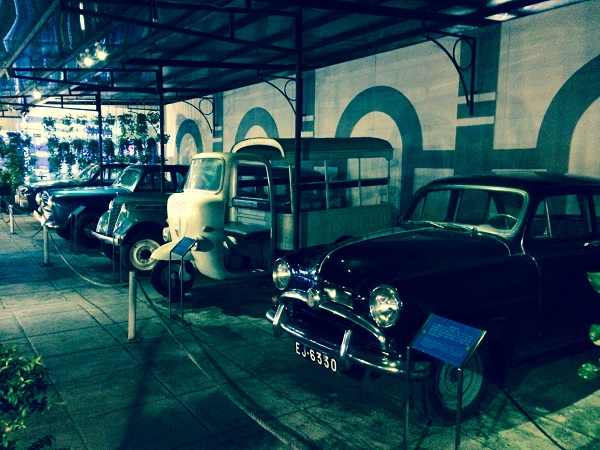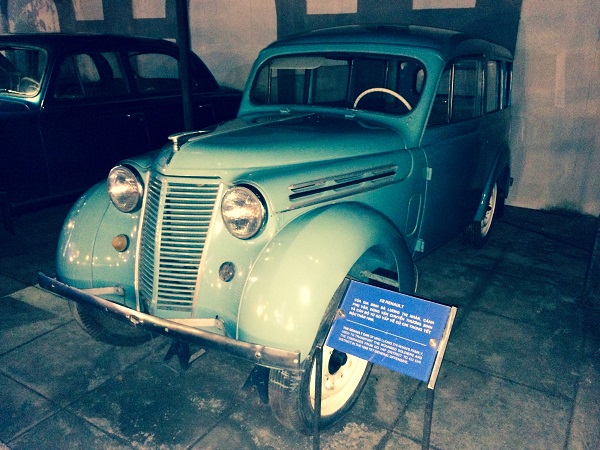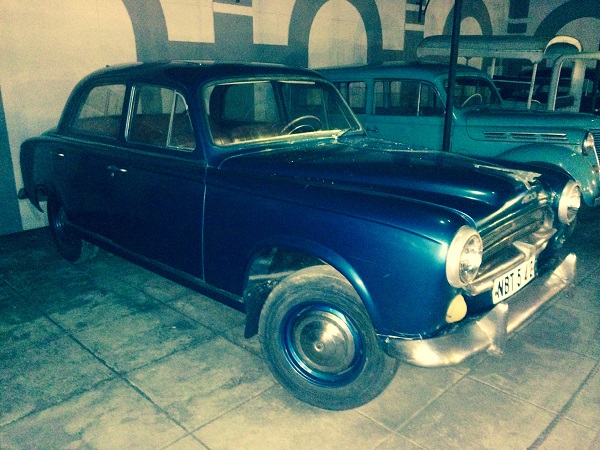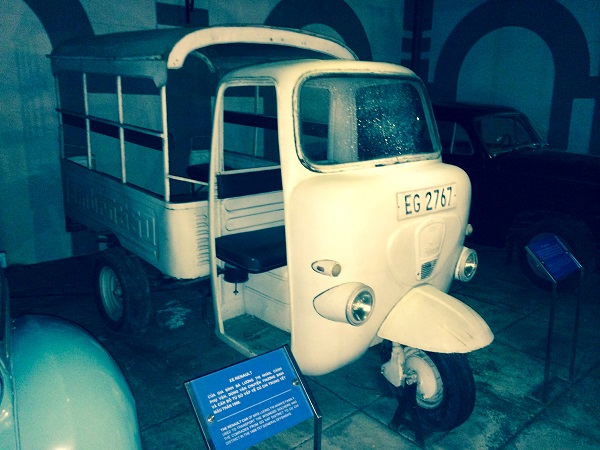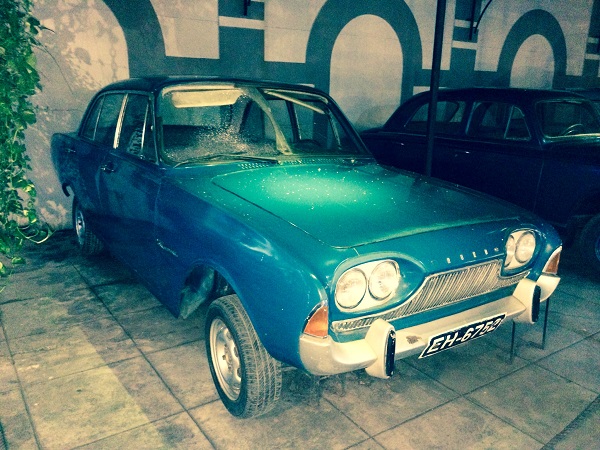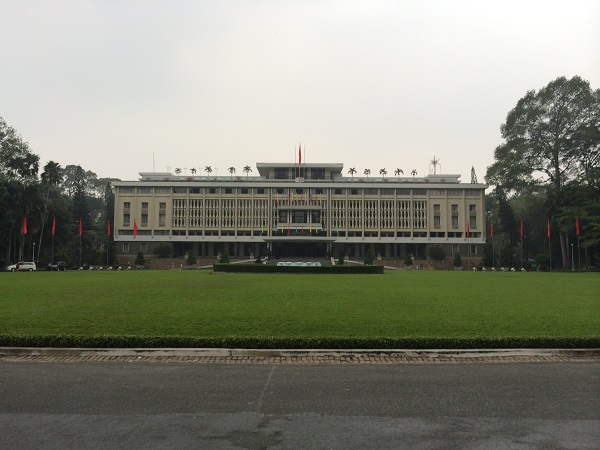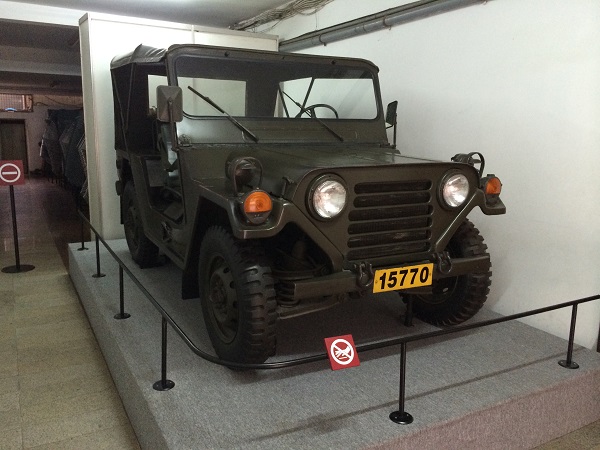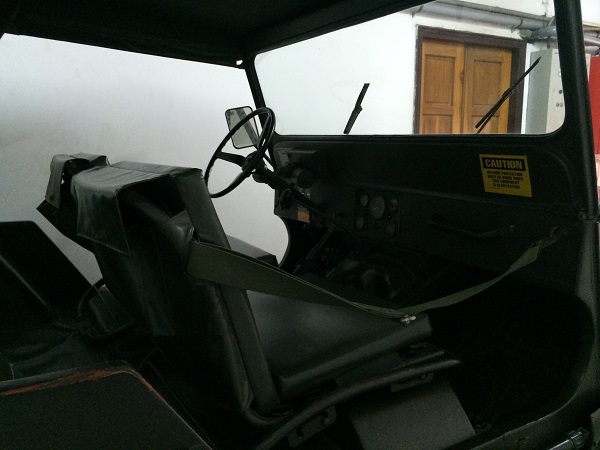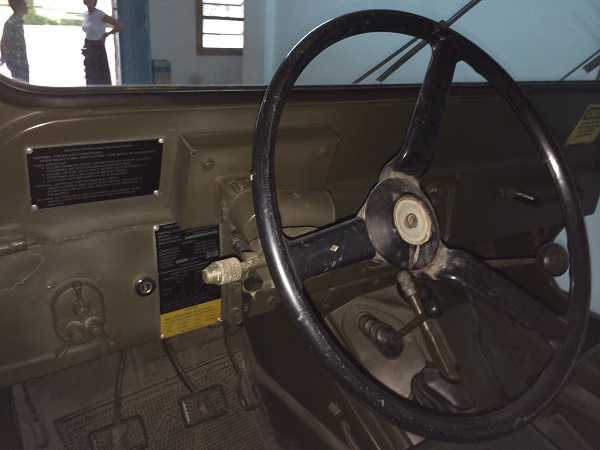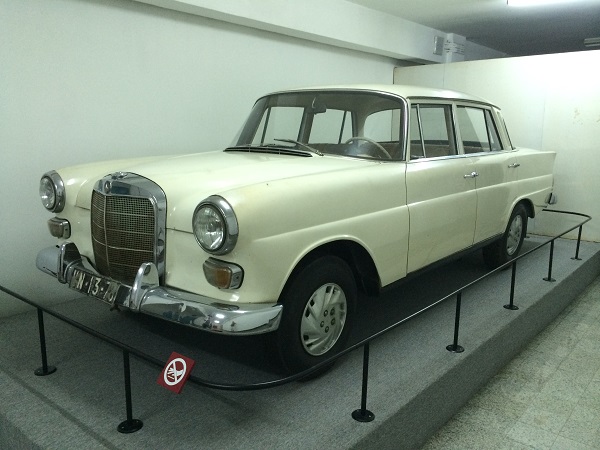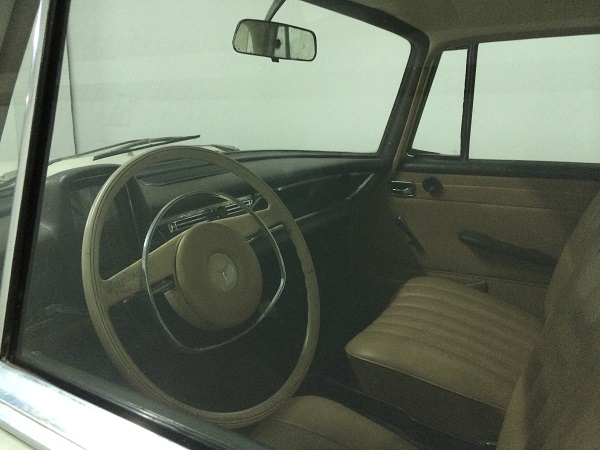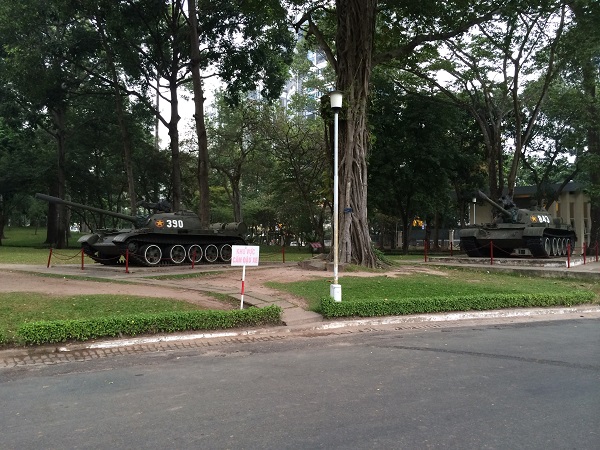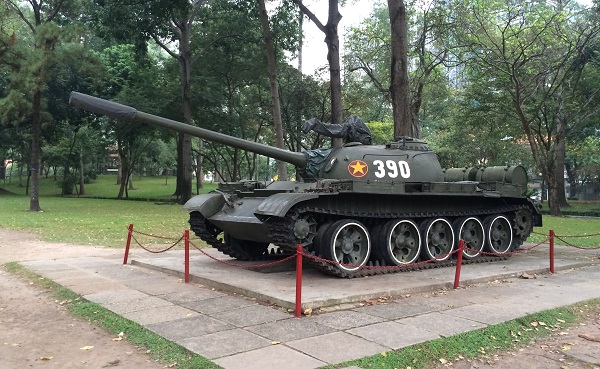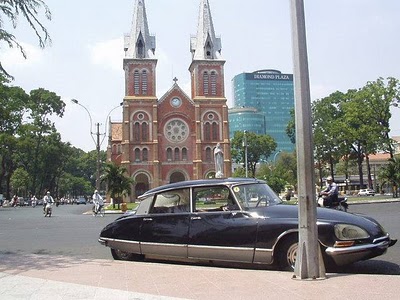Last week, Prince Charles and Prince William recorded a video with the BBC to encourage an end to the illegal wildlife trade. In an effort to spread the message to the world, the pair translated the slogan, “Unite for Wildlife,” in 5 different languages - Arabic, Vietnamese, Spanish, Swahili and Chinese. William was assigned the Vietnamese translation and stumbled through it (I don’t think he was reading the accents…) but numerous Vietnamese we showed the video to said, “that’s not Vietnamese.” ‘A’ for effort, I guess?
Tuesday 8 April 2014
Slideshow: 11 of the First Color Pictures Ever Taken in Vietnam
Slideshow: 11 of the First Color Pictures Ever Taken in Vietnam
From 1914 - 1917 Leon Busy (1874-1950), a French officer serving in Indochina, was assigned by the Albert Kahn Museum in France to capture the lives of the people in northern Vietnam. These photos were on display at the exhibition "Hanoi, color 1914-1917" which ended on January 1, 2014 in Hanoi. Luckily, Vietnam Net collected some of the gems from this collection and threw them up on their website.
These photos provide a vivid picture of what life in North was like at the turn of the 20th century, for both the regions people and monuments.
Here are some of our favorites:
Monday 7 April 2014
Video "Traffic in Saigon"
Video "Traffic in Saigon"
[Video] Mesmerizing Saigon Tilt Shift Time Lapse
[Video] Mesmerizing Saigon Tilt Shift Time Lapse
We sure love our Saigon time lapse videos. For a frenetic city like ours, these cinematic pieces are able capture its energy, perhaps more than any other medium. We recently stumbled upon this video, made by the Gotan Project back in 2009. Using the awesome tilt shift technique, it adds an additional lens with which to view the city.
The video beings with a few images so if you want to get to the meat of it, skip ahead a bit.
Using a Canon A540 with CHD at high vantage points around the city, the tilt shift technique makes cars and people look like ants.
While it’s a few years old (what’s up Thu Thiem Ferry?), it still does a great job of capturing Saigon’s atmosphere of organized chaos.
It would be awesome to get a 2014 update.
Vietnam Named a Top-50 International Tourist Destination
Vietnam Named a Top-50 International Tourist Destination

Vietnam ranks as one of the Top-50 international tourist destinations according to www.movehub.com, a popular website for those seeking to move abroad, reports VietNamNet.
With around 6 million foreign visitors per year, Vietnam ranks 41st out of 165 countries, just ahead of Australia (5.9 million), Argentina (5.7 million) and Brazil (5.4 million).
France ranks as the world’s most popular tourist destination, receiving more than 81.4 million visitors, nearly 20 million more than the US.
Continuing down the list, China comes in third with 57.6 million visitors, followed by Spain (56.7 million), Italy (46.1 million), Turkey (34 million), the UK (29.3 million), Germany (28.4 million), Russia (24.9 million) and Malaysia (24.7 million).
Vietnam has seen significant growth over the past year with the General Statistics Office reporting that number of foreign visitors in February rose 8.48 percent from January and 47.6 percent against the same period last year.
In the first two months of 2014, 1.6 million foreigners arrived in the country, a year-on-year increase of 33.4 percent.
The country is targeting 8 million foreign arrivals and 37 million domestic visitors.
We’re still holding out hope for the shared visa program that would undoubtedly boost these numbers even higher.
[VietNamNet // Photo via killerhurtalot]
Traffic in Saigon
Traffic in Saigon
Crazy Traffic in Saigon - Ho Chi Minh City - Vietnam HD
Historic Vehicles of Saigon
Historic Vehicles of Saigon
Although Vietnam has no museum dedicated to motor vehicles, reflecting the recentness of mass vehicle ownership in the country, Ho Chi Minh City has more historic automobiles on public display than any city that I have seen. The government of the Socialist Republic of Vietnam displays them for their roles in Vietnam’s war-torn past, so they come with a political message. Viewed only as historical artifacts, though, they provide some insight into the diverse world of automobiles that existed in Saigon prior to the fall of South Vietnam in 1975, as seen above in a 1960s photo of Saigon Notre Dame Basilica, the seat of the city’s Roman Catholic archdiocese and still the most recognizable landmark in the city.
This article will avoid all political debates and focus on the vehicles themselves. Mentioning the historical events that involved each vehicle will be necessary to explain why they are on display, but the purpose is not to endorse or criticize any side in the conflicts described.
A large collection of historic automobiles resides at the Ho Chi Minh City Museum, formerly the Presidential Palace of the Republic of Vietnam that U.S. forces defended during the Vietnam War and that fell in April 1975. The most prominent is the 1950s Citroen Traction Avant regularly parked in front of the building, profiled earlier. Additional historic automobiles from the 1950s and 1960s reside in a display in the back of the building.
The museum displays these automobiles in what used to be the courtyard behind the palace. Now, most of the courtyard has become outdoor seating for a restaurant around the block from the museum, and the display of cars sits cut off from the museum, looking completely out of place. I found these cars by accident when I happened to stop in the restaurant for an overpriced com tam (grilled pork with broken rice, a favorite dish of southern Vietnam). They represent three European countries: Simca, Peugeot, and Renault in France, Lambro from Italy, and Ford of Germany.
The Simca appears to be a 1951-55 Simca 9 Aronde, a small front engine/rear drive sedan with a 1.2L overhead valve four. The Aronde was a popular model in France and helped Simca to become the second largest automaker in France by the end of the 1950s. According to the museum sign, this car had a long history of use in support of Communist guerillas in the Saigon area, pre-dating the entry of U.S. troops into Vietnam by a decade. From 1955 to 1972, it transported weapons, equipment and personnel between Cu Chi and Saigon.
The Renault is possibly newer but a far older design. It is a Juvaquatre wagon, produced from 1950 to 1960, under the name Dauphinoise from 1956 onward. Renault introduced the Juvaquatre in 1937 and discontinued it as a sedan in 1948, replacing it with the highly successful 4CV that ran from 1947 to 1961. Instead of making a 4CV wagon, Renault continued the Juvaquatre as a panel van and station wagon until 1960. This Juvaquatre was used during the 1968 Tet Offensive to transport Viet Cong wounded from the Go Vap district in northwestern Saigon to Cu Chi.
A Peugeot 403 rounds out the trio of French cars. The 403, previously covered here and also as a wagon here, lasted from 1955 to 1966, with Pininfarina stying and a 65 horsepower 1468cc pushrod hemi-head four. This particular example was used to transport Communist leaders in Saigon and neighboring provinces from 1962 to 1970.
The Lambro is a three wheeled cargo carrier based on the famous Lambretta scooter, introduced by Innocenti in 1949, immediately after the Lambretta (the Lambro continues to be produced in India using the original Innocenti tooling by Scooters India Limited). Like the Lambretta scooter, the Lambro was highly popular in Vietnam, and it and the older French cars would have been suitable for moving inconspicuously around Saigon. This Lambro 550, a model with a 200cc engine produced in 1965-67, was used to transport weapons and explosives to Saigon for the 1968 Tet Offensive.
This 1960-64 Ford Taunus stands out among the French cars and Italian scooters/three-wheelers in this display, just as it would have in similar traffic on the streets of Saigon during the 1960s and 1970s. It belonged to Ngo Ba Thanh, born in 1931 and deceased in 2004, one of Saigon’s leading lawyers from the war years of the 1960s to the economic reform policies (do moi) of the 1990s. Never a Communist Party member, instead a self-declared peace activist, she spent several years in prison during the 1960s for her opposition to the war. During the 1990s, she became a leading architect of Vietnam’s economic reform policies as a member of parliament, then a consultant to foreign businesses in Vietnam. Being a public figure and not part of an underground organization, she could drive an unusual automobile around Saigon.
A German Ford Taunus, like the British Ford Cortina in the opening photograph, would have been an unusual automobile in Saigon during the 1960s and 1970s. This wartime street scene, with a Traction Avant and a 4CV taxi in the foreground, an American sedan behind them, and a VW Beetle visible in the background, provides a fairly typical mix of cars seen in period photographs. The Taunus wears quadruple round headlights instead of the lozenge shaped units that it would have had when new, probably replacements for damaged original headlights that were unavailable as spare parts in Vietnam, being exclusively for an uncommon model.
Another significant collection of historic vehicles resides in Reunification Palace, originally built as the Presidential Palace of the Republic of Vietnam during the 1960s. It was the stage for the final act of the fall of Saigon in 1975, when a tank of the army of North Vietnam crashed through the front gate on April 30, bringing the wars in Vietnam to an end. The vehicles on display there all have a connection to the fall of Saigon.
Tucked into a corner of a basement corridor in Reunification Palace, ignored by most visitors, resides an M151A2 jeep used in the surrender of South Vietnam, minutes after North Vietnamese tanks drove into the palace grounds. General Duong Van Minh, who had taken over as President of South Vietnam only two days earlier, stood near this jeep when he had this famous exchange with the commander of the first North Vietnamese Army unit in the palace: “I have been waiting since early this morning to transfer power to you.” ”There is no question of your transferring power. Your power has crumbled. You cannot give up what you do not have.”
General Minh then rode in this jeep to a radio station, where he broadcast a message declaring the complete dissolving of the government of South Vietnam and the end of the war. The government of Vietnam later restored the jeep and preserved it as a historical artifact.
The M151 series, given the delightful U.S. military acronym MUTT (“Military Utility Tactical Truck”), was the Vietnam War-era successor to the original Willys jeeps of the Second World War and the M38 jeep of the Korean War. Designed with a monocoque body that gave it a lower center of gravity and more interior space, and independent suspension with coil springs front and rear, it was more advanced than earlier military jeeps with their separate frames and solid axles with leaf springs. The M151 series and its independent suspension became known for handling problems and rollovers, however, so the armed services scrapped all but a few instead of releasing them for sale to civilians as surplus when they acquired Humvees during the 1980s and 1990s. The M151 series became an evolutionary dead end in the history of jeeps.
A short distance from the M151A2 jeep resides a more conspicuously displayed Mercedes W110 Fintail sedan, a 200 with a gasoline 2.0L four cylinder engine, produced from 1965 to 1968. It belonged to Nguyen Van Thieu, president of South Vietnam from 1965 until he resigned on April 21, 1975, shortly before the fall of Saigon. He flew out of the city five days later, abandoning most of his possessions, including the Mercedes.
Thieu’s Mercedes is in remarkably good condition that is probably original, given the considerable wear (down to bare metal) to the paint on the headlight pods and tailfin tips. Its condition reflects having had constant professional care throughout its life as a president’s personal car and then as historical state property. Only two details let it down: the cheap plastic wheel covers that belong on a mid 1990s Dodge, and a missing hood ornament (there may be a North Vietnamese war veteran with a great three-pointed star war trophy).
Being a four cylinder 200 with hand crank windows, this Mercedes indicates that the life of a corrupt dictator was less luxurious during the 1960s compared to today.
The most significant historical vehicles in the Reunification Palace grounds reside outside, in the northeast corner of the compound. They are the first two tanks which entered the palace gate on April 30, 1975. #390, a Chinese-made T59, was first, followed by #843, a Soviet-made T54. They are of the same design, with the T54 being the original Soviet tank and the T59 being a Chinese copy.
#390 and #843 are restored to like-new external condition and apparently are being carefully preserved, with their main gun muzzles and mantlets, machine guns, and engine compartment grilles under plastic covers. The T-54/55 and T59 are still the most numerous tanks of the People’s Army of Vietnam, and these two may still be considered military property to be kept ready for possible wartime use.
This photograph of #390 from April 30, 1975, with #843 probably in the background to the right, shows what these tanks and their crews looked like after several weeks of front line combat service. Bent and broken sheet metal shields over the tracks, mud caked tracks and wheels, and obvious fatigue on the faces of the crew are evident. Note that the same lamp post seen in the first photograph of the tanks is visible in the background of this photograph, showing where these tanks currently reside.
The cars shown in this article all are on display in state museums in Ho Chi Minh City. Outside of them, there is an emerging classic car scene, with a Saigon Classic Car Club already organized and with an internet presence, and other groups probably in existence as well. The website of the Saigon Classic Car Club shows members with Citroens and other French cars of all ages, American cars of the late 1950s through early 1970s, VW Beetles and Microbuses, Mercedes, Toyotas, and others. It also shows “barn finds” of dusty old cars rediscovered after being forgotten for many years.
I believe that the classic car community worldwide will hear a lot more about Vietnam in the future, as Vietnamese auto enthusiasts find and restore more cars such as the Citroen DS seen above in a recent photo taken at Saigon Notre Dame Basilica. Vietnam is a country whose people have a rapidly rising standard of living and a keen interest in automobiles and motorcycles. As they rediscover the cars from all over the world that accumulated in their country during the 20th Century, they will have many interesting vehicles to show to classic car enthusiasts worldwide.
Homecoming: Bandit9 Custom Bikes Lands in Saigon
Homecoming: Bandit9 Custom Bikes Lands in Saigon
Daryl Villanueva moved to Saigon in 2011 on a 1 year contract for an international advertising agency. A week into his stay, he bought his first motorbike, a Honda Super Cub. A week later, he painted it, and a week after that, he bought his second bike. He had contracted a full-blown case of motorbike fever.
Leaving the agency life behind, he succeeded in building Bandit9, a motorbike shop in Beijing where he and his team crafted beautifully designed motorcycles. Tired of smog-filled skies, Daryl has returned the city that inspired his dreams and is ready to take Saigon’s custom bike scene to the next level.
It all started with a Honda Super Cub. “It was my very first bike and I got it right here in Saigon. I just fell in love with the feeling of riding such a simple, beautiful, classic machine,” Daryl explained.
While riding this Saigon classic, Daryl first explored the city and quickly discovered that these 2-wheeled machines dominate both the Vietnamese roads and psyche:
“The motorcycle community here is what gives the city life. They're like little red blood cells coursing through the city's veins. And when you're in the thick of the action, well, there's just nothing like it. It isn't about speed here. You don't need to go fast to experience the joy of riding. It's not about having a big expensive bike. It's about being a part of a community. It's about being part of something with a bigger purpose,” said Daryl.

When Bandit9 launched in Beijing, it quickly gained notoriety for flipping the “Made-in-China” stereotype on its head. There, they built massive, 750cc+ bikes, tailored for local roads. In Saigon, “where agility trumps power and speed,” they’ll be focusing on bikes with smaller engines (90cc – 250cc). According to Daryl, “In cities like New York, Paris, Hong Kong, Beijing, and Saigon, it's hard to flex all the muscles of a really big bike. So we decided to go with small, fast, agile machines. Although the bikes are aesthetically pleasing, there's a real functional aspect to it. The bikes are designed to get you around with speed and style.”

And this concept seems to be working. Beyond constant press coverage, Bandit9’s existing clientele is comprised of, “Ferrari designers, Porsche designers, film and commercial directors, folks from the design industry and architects,” revealed Daryl.
In Saigon, Bandit9 wants to make its bikes as affordable as possible while maintaining its reputation for unique, high-quality builds. At around US$5,000, their bikes might not be the cheapest on the road, but with limited production runs (9/per model), not to mention some of the most unique bike design you’ll ever see, they’re a value compared with larger custom bikes.
Bandit9’s Saigon shop will be staffed by Daryl, who will lead the design process and business in general, a “talented” mechanic/engineer who will, “help make the designs a reality,” and a creative strategist to, “make sure that we're constantly pushing fresh products to the people.”
How long does Bandit9 plan to set up shop in Saigon? “Indefinitely, said Daryl. “We think Saigon is the future. And we want a piece of the action.”
Based on the designs we’ve seen, “indefinitely” might not be long enough to satiate the appetite of bike-obsessed Saigonese.
Bandit9 Info:
Website: www.banditnine.com
Email:
info@banditnine.comThis email address is being protected from spambots. You need JavaScript enabled to view it.
Facebook: www.facebook.com/bandit9bikes
Saigoneer will be working with Bandit9 to create some exciting content in the coming months, so keep your eyes peeled!
[Video] Vietnamese Students Create Epic Fight Sequence
[Video] Vietnamese Students Create Epic Fight Sequence

When kids have too much time on their hands, it often results in toilet papered houses and/or motorbike racing. But for some, free time allows for imaginations to run free, which was clearly the case in this surprisingly well-produced and entertaining video, ‘Boys over Powers – The Meteors Strike.’ It may be a few years old but well-worth rehashing for those who haven't experienced its awesomeness and hilarity.
So sit back, relax and enjoy 6 minutes of ridiculous fight scenes and superpowers. Just don’t ask what this has to do with an earth-destroying meteor strike.
Oh, and here’s Part 2:
Photography/Digital Editing Courses with Quinn Ryan Mattingly
Photography/Digital Editing Courses with Quinn Ryan Mattingly
From the organizer:
Do you have a great camera or editing software but not sure how to get the most from it? Saigon School of Imaging is here to help. With current courses in Lightroom, Photoshop and Photography led by professional photographer Quinn Ryan Mattingly, we can help you learn the best way to shoot and edit your way to stunning images.
Courses typically run on weekends every two months, starting on March 15th with Lightroom 201 and March 16th Lightroom 101. The following weekend workshops for Photoshop 101 on March 22nd, and Photography 101 on March 23trd will be offered. All courses are 8 hours of instruction, with one-hour lunch break catered by Scott & Binh’s. One on one courses are also available.
For more information, please email
info@saigonimaging.comThis email address is being protected from spambots. You need JavaScript enabled to view it.
or call 012 8569 8144.
Hoang Oanh: Vietnam’s Original Pop Star
Hoang Oanh: Vietnam’s Original Pop Star
The crate diggers over at music blog, Bodega pop have put together a collection of songs from Hoang Oanh, the “Saigon Siren,” produced between 1960 and 1975, the Golden Era of Vietnamese pop.
Born Huynh Kim Chi in My Tho in 1950, Oanh is “considered by many contemporary Vietnamese singers to a primary influence,” writes Bodega pop.
Le Bong:
Mua Gat Moi:
Tinh Yeu Tra Lai Trang Sao:
Considering the current state of Vietnamese pop music, it's hard to believe there was a time, before K-pop and obnoxious electronic music , that it was, to put it bluntly - good.
Head over to Bodega pop for the full set.
Hai em gái bá đạo nhất mà tôi biết
Hai em gái bá đạo nhất mà tôi biết
Sunday 6 April 2014
Visa-Free Stay for Phu Quoc Visitors Extended to 30 Days
Visa-Free Stay for Phu Quoc Visitors Extended to 30 Days

The island of Phu Quoc has bumped up its visa-free stay to 30 days for international visitors, reports Thanh Nien.
The new regulations, which went into effect on March 10, raised the amount of time international visitors can stay visa-free in Phu Quoc from 15 to 30 days. They will “also enjoy the highest incentive levels offered by the government for economic, export-processing, and industrial zones.”
Phu Quoc Island is aiming to achieve the status of ‘special economic zone’ by 2020 with the hopes of becoming “a high-end entertainment-tourism center, a financial center…” while attracting 2-3 million tourists.
From January – October 2013, the island welcomed around 548,000 visitors.
It would be nice to see this common sense approach to visas adopted by the rest of the country.
[Thanh Nien // Photo via Linh Lý Thành]
Documentary: 12 O'clock Boys @ Saigon Outcast
Documentary: 12 O'clock Boys @ Saigon Outcast
From the organizer:
To Baltimore locals, the 12 O'Clock Boys are hooligans - a group of urban dirt-bikers that perform death-defying stunts at excessive speeds through traffic and impressively evade the hamstrung police, who must adhere to a no-chase policy to maintain public safety.
Yet they are heroes to Pug, a bright, young adolescentliving in the city's dangerous Westside neighborhood with his charismatic mother Coco, extended family, and a menagerie of animals to which he tends in his long-standing hope to be a veterinarian. Yet as his obsession with the 12 O'Clock Boys grows, his desire to join the bikers begins eclipsing everything else in his life, much to Coco's dismay. Filled with stunningly kinetic footage that puts the viewer on up-close ride-alongs with the bikers, 12 O'CLOCK BOYS provides a compelling and personal story of a young boy and his dangerous, thrilling dream. 7.3/10 by rotten tomato
Free entry
Buncha Hanoi and BBQ will be served.
10 minute intermission or popcorn break will carried out at half time.
Thursday, 20 March
8:00pm
Saigon Outcast
Saigon Outcast

Map DataMap data ©2014 Google
Map Data
Map data ©2014 Google

Map data ©2014 Google











Map
Satellite





